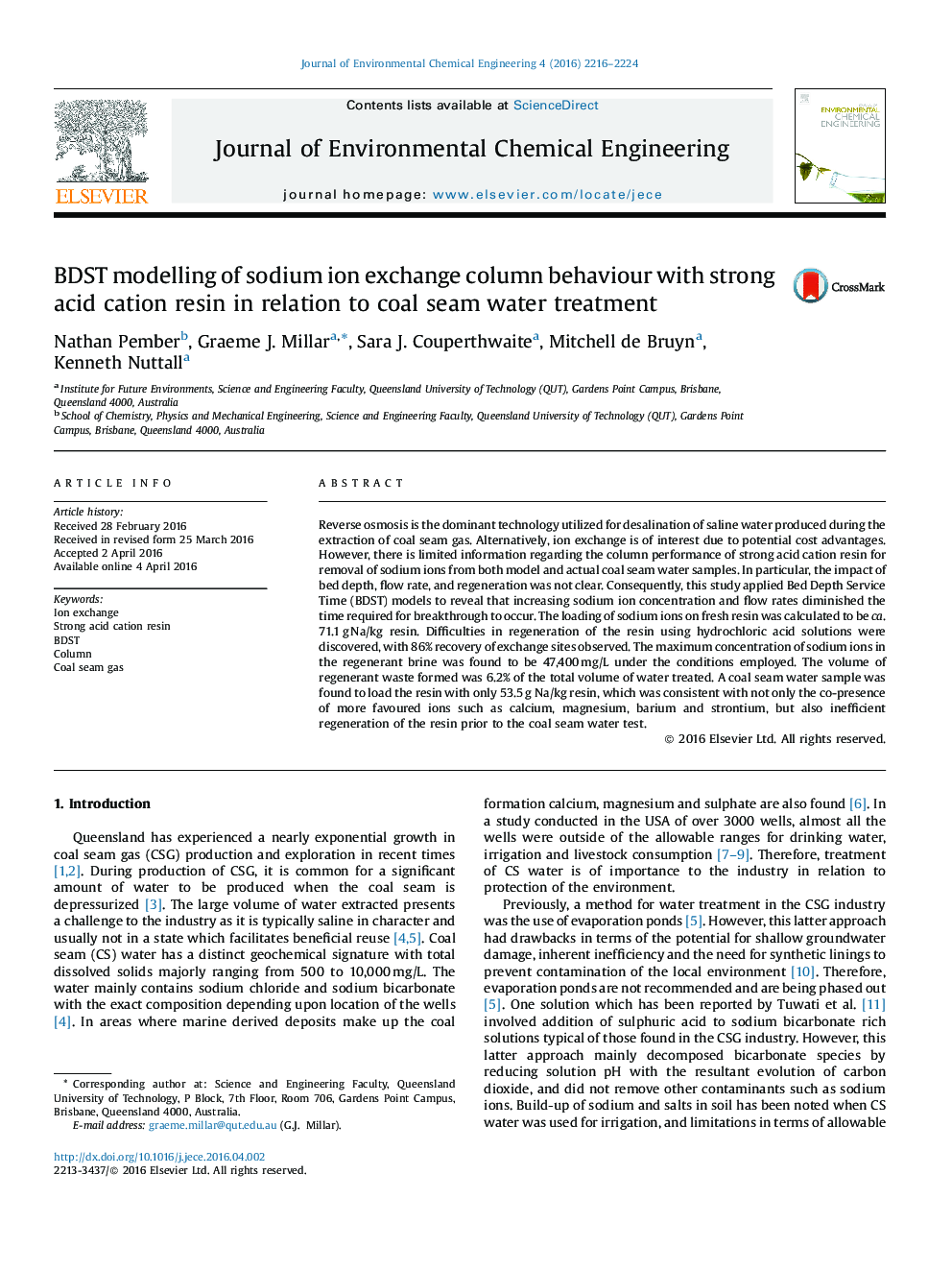| Article ID | Journal | Published Year | Pages | File Type |
|---|---|---|---|---|
| 221706 | Journal of Environmental Chemical Engineering | 2016 | 9 Pages |
•SAC resins reduced the concentration of sodium ions from actual and simulated CS water to <5 mg/L.•BDST model showed that breakthrough time depended upon flow rate and sodium ion concentration.•Regeneration of SAC resins was inefficient (<86%) when using 10 wt/v% hydrochloric acid.•Volume of regenerant waste produced was only 6.2% of total water volume treated.•Sodium ion uptake inhibited by the presence of competing cations in coal seam water.
Reverse osmosis is the dominant technology utilized for desalination of saline water produced during the extraction of coal seam gas. Alternatively, ion exchange is of interest due to potential cost advantages. However, there is limited information regarding the column performance of strong acid cation resin for removal of sodium ions from both model and actual coal seam water samples. In particular, the impact of bed depth, flow rate, and regeneration was not clear. Consequently, this study applied Bed Depth Service Time (BDST) models to reveal that increasing sodium ion concentration and flow rates diminished the time required for breakthrough to occur. The loading of sodium ions on fresh resin was calculated to be ca. 71.1 g Na/kg resin. Difficulties in regeneration of the resin using hydrochloric acid solutions were discovered, with 86% recovery of exchange sites observed. The maximum concentration of sodium ions in the regenerant brine was found to be 47,400 mg/L under the conditions employed. The volume of regenerant waste formed was 6.2% of the total volume of water treated. A coal seam water sample was found to load the resin with only 53.5 g Na/kg resin, which was consistent with not only the co-presence of more favoured ions such as calcium, magnesium, barium and strontium, but also inefficient regeneration of the resin prior to the coal seam water test.
